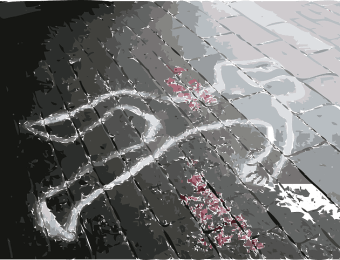
(photo: readerwalker, creative commons license)
By Michael Connelly, narrated by Titus Welliver – What a pleasure it is to enter the Los Angeles airspace of Harry Bosch and his half-brother Mickey Haller. Teaming up his two protagonists from the Bosch and Lincoln Lawyer series was a brilliant move by Connelly, and I’ve enjoyed every story of the two of them, fighting crime and for justice. In this latest double-outing, Connelly does not disappoint.
In The Crossing, Bosch takes the lead. He’s retired, not by choice, and rattling around his garage doing not very much. Haller approaches him about serving as an investigator on a difficult case he’s undertaken: a man accused of a brutal murder based on supposedly irrefutable DNA evidence, but Haller is convinced his client is innocent. Bosch is doubtful. Worse, if he agrees to help the defense he’s “going over to the dark side” in his own eyes, and it will be seen as a betrayal by all his former police department colleagues. Still, reviewing the case files does raise a few unanswered questions and, as we might expect, Bosch’s investigatory instincts soon overrun his reservations, and, with nothing more than the box for a luxury wristwatch to go on, he’s off. But meanwhile, a couple of rogue cops are up to something, and the brothers are in their sights.
Seeing Bosch and Haller work in their respective roles—investigator and courtroom advocate—lets Connelly show off his characters’ different skill sets and keeps the reader (listener, in this case) well entertained. It’s instructive to hear Haller’s reminders that, while Bosch may be on a search for the truth, the client must be their uppermost concern.
As to the effectiveness of the audio version, Welliver’s excellent reading, combined with Connelly’s clear writing style, made it easy to keep track of the characters and the story. Welliver is super-prepared for this reading, as he played the character of Harry Bosch in the eponymous Amazon television series that premiered in 2015. An interview with Connelly and Welliver is included in this Crime Fiction Lover preview of the television series.







 A panel at last weekend’s Deadly Ink 2015 conference represented a spectrum of views about the research lengths mystery writers go to. At the “as factual as possible” end of the spectrum was K.B. Inglee, a writer of historical mysteries who is also a history museum docent and reenactor (talk about living your research!), closely followed by Kim Kash, who seeks a realistic recreation of Ocean City, Maryland, where her fictitious characters and stories play and play out. Setting her mysteries there began when she wrote a tour guide for the city, a compilation of facts and contacts that has since served her well.
A panel at last weekend’s Deadly Ink 2015 conference represented a spectrum of views about the research lengths mystery writers go to. At the “as factual as possible” end of the spectrum was K.B. Inglee, a writer of historical mysteries who is also a history museum docent and reenactor (talk about living your research!), closely followed by Kim Kash, who seeks a realistic recreation of Ocean City, Maryland, where her fictitious characters and stories play and play out. Setting her mysteries there began when she wrote a tour guide for the city, a compilation of facts and contacts that has since served her well.
 When this film (
When this film (